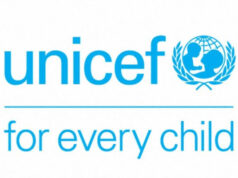HIV treatment breakthrough
Scientists have developed a new therapy for HIV/AIDS that they say could lead to longer periods of pill-free treatment and even eventually, perhaps, to what experts call a “functional cure”.
Researchers at Taiwan-based United BioPharma report encouraging results with a single injection that seems to check HIV as well as daily pill regimens.
A report on their study published in a the New England Journal of Medicine this April says the results add to a growing number of studies suggesting that patients may be able to take pill holidays without putting their health at risk.
Currently, patients have to take combinations of medications keep the virus under control and not damaging their immune systems, which could lead to more serious, fatal outcomes.
“Therefore, the patients’ greatest struggle is contending with the daily regimen of pills, unappreciated long-term toxicity and stigma. These can impact a patient’s quality of life,” said says Chang-Yi Wang, chief scientific officer and chairperson of the company and lead author of the study.
The patients must also adhere to a strict medication regime. Missing a dose of the pills, they are warned, can give the virus the chance to develop resistance to the drugs and lead to a surge in new copies of HIV that flood the body.
Wang said there are several benefits to antibody drugs.
“One, antibodies have long half-lives and can be administered with less a frequent dosing schedule, such as … weekly, semi-monthly or even monthly,” Wang said. “Two, biological protein drugs have lower toxicities to the liver, kidneys, etc. And three, certain antibody drugs, such as UB-421, can exhibit beneficial immunomodulatory effects that cannot be achieved by small molecule drugs.”
The HIV knock-out
The new therapy involves an injectable monoclonal antibody called UB-421 which promises to keep the virus in the patient’s blood stream below-detectable levels. The UB-421 anti-body is designed to stick to the same site on immune cells that HIV uses to infect cells; the idea is that UB-421 would compete with HIV and occupy more of these sites, preventing the virus from entering and infecting new cells.
In fact, UB-421 binds to immune cells with 50 to 100 times greater affinity than HIV does and can even knock HIV out of the entry site when the virus is already there.
“We were able to use this antibody to maintain durable viral remission using a single agent instead of a cocktail of drugs,” says Chang-Yi Wang, chief scientific officer and chairperson of the company and lead author of the study. “Such a durable maintenance is unprecedented, and it opens up a host of potential new treatment options for patients with resistance-prone HIV infection.”
The study is a first step toward making it possible for patients to move away from daily pill treatments and rely on longer term control of the virus.
The researchers plan to study UB-421 next in people who have been recently diagnosed with HIV but are not yet taking medications; they will see if the shot can control the virus for up to six months.
Wang is hopeful that the results will be positive. Already, further analysis of the data from the current study suggest that longer remissions may be feasible.
Not only did the antibody UB-421 block HIV from infecting new cells, but it also seemed to modify the study participants’ immune cells in ways that made them better able to fight off the virus. UB-421 seemed to activate certain immune cells to better recognize and destroy HIV, including the hard-to-reach reservoirs where the virus tends to hide from immune cells.
“We think [UB-421] could be a great agent in future studies for activating T cells to do many things, including cleaning the body of virus,” she says.
If the immune system can be retrained to better ward off HIV, that could lead to longer and longer periods of pill-free treatment and even eventually, perhaps, to what experts call a functional cure for HIV — should UB-421 allow patients go years with undetectable HIV levels without needing pills or repeated antibody injections.
“We don’t know exactly what passively transferring antibodies is doing,” says Dr. Anthony Fauci, director of the National Institute on Allergy and Infectious Diseases, which partially supported the study. “But there is something going on to induce at least partially — not perfectly — better immune responses than the body naturally makes against the virus.”
Fauci notes that UB-421 works by mimicking the door on immune cells that HIV uses to enter and infect. Fauci and other researchers are also studying antibodies, called broadly neutralizing antibodies, that bind to HIV itself and prevent it from infecting cells. It’s likely that an effective, long-acting and pill-free treatment for HIV may involve a combination of agents like UB-421 and broadly neutralizing antibodies, says Fauci, so that HIV is both crippled and prevented from entering cells.
“Something like that could be a knock-out punch,” he says.
Details of study
In the nonrandomized, open-label, phase 2 clinical study conducted in Taiwan, 29 volunteers with well-controlled HIV were asked to discontinue their normal regimens of daily oral ART pills at the time of their first injection or one week later, depending on their ART regimen.
Fourteen study participants received regular weekly infusions of UB-421, while 15 received higher-dose infusions but once every two weeks. At the end of the 8- or 16-week treatment period, all volunteers restarted their previous ART regimen and were evaluated in follow-up visits up to eight weeks later. Apart from a single participant who discontinued the study because of a mild skin rash, volunteers in both groups maintained HIV suppression (plasma HIV RNA levels under 20 copies/mL) throughout the treatment period in the absence of ART.
This indicates that the injections — in both doses and frequencies — were effectively controlling HIV from replicating further and spreading infection.
Previous experimental infusions of broadly neutralising antibodies (bNAbs) have suppressed HIV for about two weeks by targeting proteins on the virus itself, but the rapid mutation rate of HIV induces antibody-resistant strains that render the treatment ineffective.
UB-421 theoretically avoids this possibility by blocking a stable human protein that HIV uses to infect T cells. Indeed, resistance to UB-421 was not seen in this study. Because the small study did not include a comparator group receiving a placebo infusion, further studies have been planned in Taiwan and Thailand to evaluate the safety and efficacy of UB-421 as a treatment for HIV.
In a related study, scientists at the National Institute of Allergy and Infectious Diseases (NIAID) are currently evaluating the safety of regular infusions of two highly potent bNAbs that may prevent the development of resistant HIV strains by targeting two distinct areas of the virus.
Last year, researchers at the National Institute of Allergy and Infectious Diseases found that short-term ATI did not increase the HIV reservoir size or cause irreversible damage to the immune system, supporting its use to determine the efficacy of ART-free novel therapeutics on virologic suppression.




